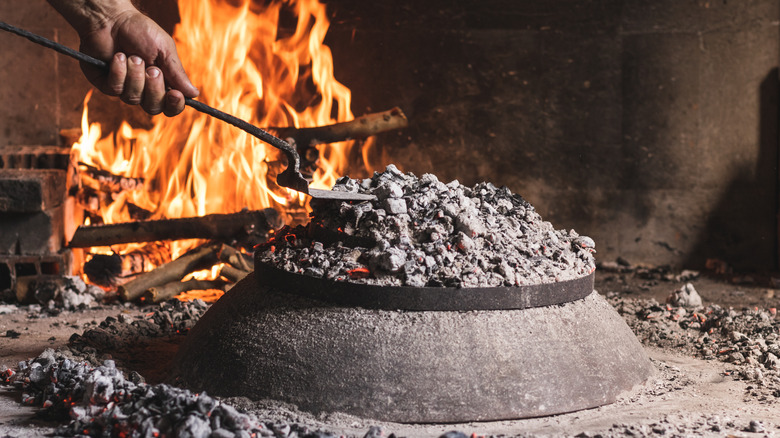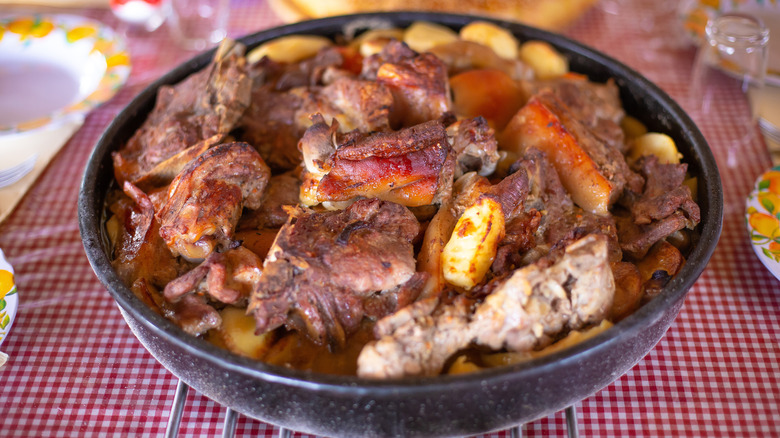Peka: The Age-Old Cooking Technique Involving Ember And Ash
There's nothing quite like a roast — a soul-satisfying slow-cooked meal that's built to be enjoyed with family and friends. In the U.S., it's most frequently made in a crockpot or oven, like this ultra-comforting Mississippi version with chuck.
In Croatia and Bosnia, roasting is carried out with a unique charcoal-fired flair. It takes place outdoors in a traditional oven called a crna kuhinja, or black kitchen. Then, using a bell-shaped cast-iron vessel, the food is slow-cooked for hours while enclosed by burning embers, per Chasing the Donkey. While this dish utilizes only a few ingredients, the result accomplishes the delectable quality of a roast — flavors and fats intermingling for hours.
Occasionally, Croatians refer to this method literally as Ispod Čripnje, or "under the bell," but it's most commonly called Peka and sometimes Sać. The name refers to both the cooking method and the bell-shaped vessel, explains Taste Atlas. So let's take off the lid and see how and what get's prepared using this ancient technique.
In Peka, large chunks of meat or seafood are mixed with vegetables and olive oil.
Although still prepared throughout the Balkans, Peka is now most associated with Dalmatia, the southern part of Croatia's stunning Mediterranean coastline. As such, the prepared ingredients reflect the surroundings: most commonly lamb, veal, or seafood (especially octopus), with vegetables (nearly always potatoes), and always a generous amount of olive oil, per Taste Atlas
The meat is cut into sizable chunks and then combined with aromatics like garlic, rosemary, and salt. Next, the potatoes and vegetables are arranged over the meat. Then the heavy lid, the aforementioned bell, is placed on top, and the contents are fully covered in embers. The cooking takes a couple of hours, and the contents are mixed after 45 minutes, per World Food Story.
The essence of Peka shines the most amidst home-cooked surroundings. According to National Geographic, the Balkan Wars eradicated the restaurant scene, which only started to recover with mass tourism. Some eateries serve Peka, but corners are cut in a commercial setting. Preparing Peka is a purposefully slow-moving convivial process. This elongated meal brings out the best of Croatian hospitality — making it a dish that can't be missed on a visit to the Adriatic.

